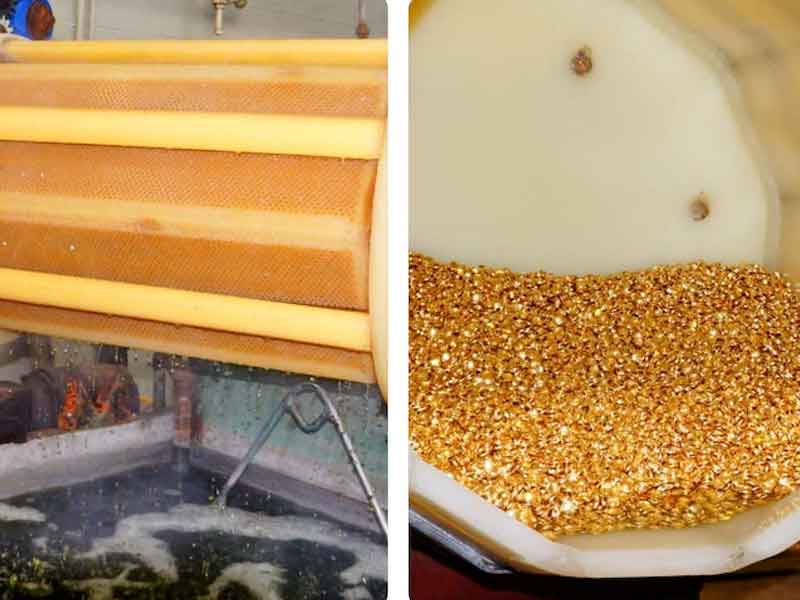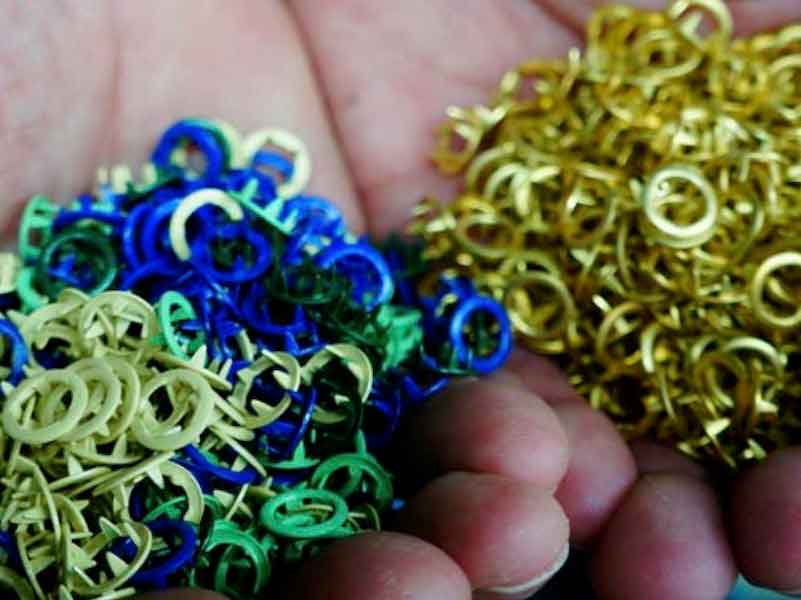As its name suggests, the purpose of any paint stripping application is to utilize chemistry to facilitate the targeted removal of paint and other organic coatings from a particular substrate.
 Connor CallaisGenerally, with an immersion-based process, parts are submerged in the stripping solution, and the coatings are chemically removed through delamination or dissolution. Delamination is where the bonds between the coating and substrate are disrupted, causing the paint to peel away from the surface, much like a decal would be peeled from a window. Dissolution, meanwhile, works by breaking the bonds within the paint and dissolving it into a solution.
Connor CallaisGenerally, with an immersion-based process, parts are submerged in the stripping solution, and the coatings are chemically removed through delamination or dissolution. Delamination is where the bonds between the coating and substrate are disrupted, causing the paint to peel away from the surface, much like a decal would be peeled from a window. Dissolution, meanwhile, works by breaking the bonds within the paint and dissolving it into a solution.
Both mechanisms leverage thermal and mechanical energy to improve their effectiveness and efficiency; applications usually operate between 150°F-200°F and utilize a system of eductors to increase impingement and physically remove stripped material from the surface of the substrate.
Why Paint Stripping is the Best Route to Take
In addition to paint stripping, there are various alternative methods to remove unwanted paint from related parts and fixturing. Burn-off ovens and fluidized sand beds are often used to destroy the paint and reclaim the base substrates, but they pose frequent maintenance issues and often deposit an ash residual on the metal that can be challenging to remove.
Paint stripping, meanwhile, operates at considerably lower temperatures, which leads to significantly less stress on the metal substrates after repeated processing. Lower temperatures also result in reduced energy demands, often allowing processes to incorporate steam or electric heat rather than being limited to gas. Efficiencies also apply to the resource of time; it is common for a coating to fully strip in as little as 15 minutes, allowing it to be incorporated as an in-line process.
The process of paint stripping itself is rather straightforward. Like any immersion process, parts are submerged in the stripping solution for a determined amount of time. Once the removal has taken place, the parts are removed, thoroughly rinsed, and then dried. The dwell time is dependent on a variety of factors, but routine stripping is usually the best way to optimize the efficiency of the process. Adjusting other parameters like operating temperature and agitation can also considerably impact the results.
The Difference Between Organic and Acidic, and Which is Better?
 When we categorize paint stripping products, we often do so with respect to the product’s “builder” or its primary base component; these can range from alcohols and other organic compounds to caustic or acidic solutions. It is not necessarily the case that one is generally better than the other, but rather which would be best suited for a particular application.
When we categorize paint stripping products, we often do so with respect to the product’s “builder” or its primary base component; these can range from alcohols and other organic compounds to caustic or acidic solutions. It is not necessarily the case that one is generally better than the other, but rather which would be best suited for a particular application.
What we would call “organic” strippers usually do not contain water or aqueous components and, by extension, are relatively pH neutral. This property allows the products to be utilized in a broad range of applications, particularly when multiple metal types need to be processed. Aqueous (acidic/caustic) strippers leverage their respective pH levels to facilitate a targeted removal mechanism specific to a paint composition or a substrate type.
Determining appropriate chemistry depends on both the composition of the coating and the material or alloy of the substrate. While powder and electrocoat paints can usually be stripped with most products, other paint types are more selective. For polymeric coatings like epoxies and esters, caustic products work to depolymerize or break the bonds of the molecules, allowing the paint to dissolve.
On the other hand, acidic products are very effective in removing CARC coatings, which can otherwise be particularly difficult to remove. In addition to the paint type, the substrate material is another vital consideration as compatibility with the substrate and is stripper is just as crucial. Aluminum and caustic are incredibly reactive, especially at elevated temperatures. Similarly, mild steel is particularly susceptible to accelerated corrosion in acidic environments.
These factors, among others, are considered when selecting an appropriate product; often, preliminary lab testing is conducted to evaluate the performance and compatibility before making any product recommendation.
Maintaining a Paint Stripping Operation
Maintaining the operation is actually more accessible than one might expect with the right systems in place. Of course, a facility will want to make sure that the process operates under suitable parameters like temperature and agitation.
One of the most important aspects of a successful application is continuous filtration and removal of the stripped particulate. As the paint is removed from the surface, it must also be removed from the solution to allow the process to function properly. Continuous bag filtration is commonly implemented to remove the solids, but other methods such as centrifugal filtration can also be used.
While paint strippers are formulated with components possessing high boiling points and low volatility, water-containing products (acidic and caustic) will experience a degree of evaporation at operating temperature. This is easily addressed by replenishing with water on either a daily or continuous basis. The only actual “loss” of chemistry comes from the result of drag-out during the removal and rinsing of the stripped substrates; minimizing drag-out through strategic fixturing and proper draining practices minimizes excess chemical usage and costs.
Regulations to Follow to Ensure Safe Operations
As with any chemical process, proper personal protective equipment and caution should be used when handling and operating a paint stripping application.
Advances in product development and exposure research have eliminated the use of highly volatile, carcinogenic solvents like methylene chloride. Ventilation should be used to evacuate the steam and vapors from the operating environment, and safe handling practices are to be observed to minimize the risk for splashback or spill of the solution.
Disposal of related chemical waste should be done with consult of the products respective Safety Data Sheet and in accordance with local regulations and permits.
Connor Callais is a Technical Applications Specialist at Hubbard-Hall. Please visit www.HubbardHall.com



































